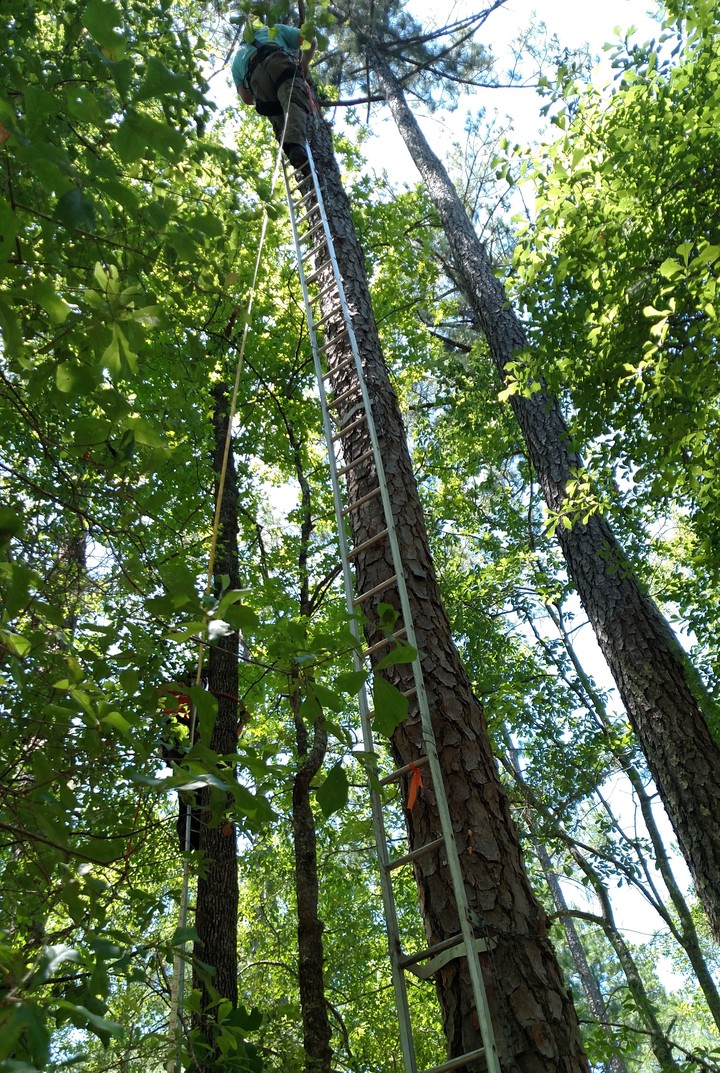Little vertical and circumferential variations in stem xylem water δ2H and δ18O in three tree species

Abstract
Vertical and circumferential patterns of xylem water isotope signatures in large trees are rarely characterized but may influence interpretation of water source investigations and soil/xylem water isotope offsets. To examine vertical and circumferential variation in xylem water δ2H and δ18O, we collected xylem tissue at 5 heights (0, 1, 4, 7 and 10 m) from three replicate trees of three species with contrasting xylem anatomy, two angiosperms (Liquidambar styraciflua and Quercus nigra) and one gymnosperm (Pinus taeda). Concurrently, we also determined δ2H and δ18O of groundwater, soil water, and recent precipitation. On a different day, we collected circumferential samples at 1 m from the same trees to test for sectorality effects. Water from stem and soil samples were cryogenically extracted and analyzed for δ2H and δ18O. Mean xylem water δ2H and δ18O were significantly different between species, both vertically and circumferentially. We did not find significant (p=0.05) systematic variation in δ2H or δ18O with height. We found no significant evidence for sectorality effects on δ2H, δ18O. Variances of vertical synoptic xylem water δ2H or δ18O were similar between species, 7.2–10.4‰ for δ2H and 0.58–0.81‰ for δ18O. Circumferential variances were also similar between species, 4.0–6.0 for δ2H and 0.37–0.44 for δ18O. A mixing model showed that sweetgum, water oak and loblolly pine, were drawing most of their water from deep soil from 45 to 190 cm (84.7, 68.4 and 53.2%, respectively) however, soil water-excess values indicate δ2H fractionation effects on these estimates. Dual isotope mixing model evaluation with single and multiple sample configurations showed that source water estimates were not affected by within tree variability of xylem water signatures. Xylem water δ2H and δ18O variability with height or circumference, was 3.2 and 2.7 times less than between tree variation because of transient temporal and spatial processes and is, therefore, not likely to affect interpretations of water sourcing in these three species.